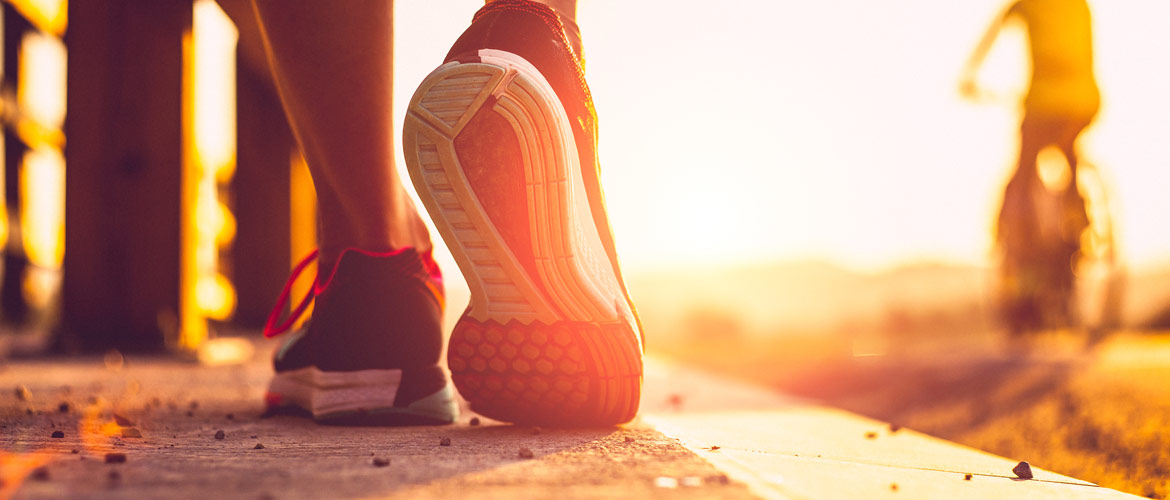What is Athlete’s Foot Treatment?
The safest treatment of tinea pedis, commonly known as athlete’s foot, is a topical antifungal.1 However, recurrence is common in severe cases, which is similar to ringworm. Proper treatment may require more than over-the-counter athlete’s foot cream, which is often unsuccessful in healing the infection.
At MedExpress, our providers will examine the condition of your feet, including the heel, bottom of your feet, between the toes and your toenails. Then, depending on their findings, they may prescribe a topical cream and oral antifungal such as itraconazole or terbinafine, which are among the strongest treatment for athlete’s foot.
Your provider may also suggest moisture reduction for your feet. For example, you should dry between your toes after showering and use a drying agent like antifungal powders (miconazole). Other helpful products include gentian violet, burrows solution, aluminum acetate soaks and aluminum chloride solution. They will aid you in preventing fungal infections.
schedule an appointment at MedExpress
You can either schedule an appointment s online or walk in any time from 8 to 8 every day.
We also offer Virtual Visits where a provider will visually examine your athlete’s foot and offer guidance for the next stage in your care, including a prescription if needed.
For your convenience, we accept most major insurance. To verify that your insurance is in-network, visit the Plan Your Visit page. We also offer a discount to those patients who choose to pay in full for their visit at the time of service. Self-pay services are $199.
Athlete’s Foot Symptoms

Athlete’s foot is a skin and foot infection that is caused by several different fungi. The dermatophyte fungi at the root of this foot issue include trichophyton rubrum, trichophytonninterdigitale, epidermophyton floccosum and tricholosporum violaceum.1
Athlete’s foot can impact any part of your foot, but the infection most often is found between the toes.2
The symptoms usually are in the form of skin fissures or red and itchy scales. While the infection most often appears on the pinky toe and the toe near it, the sole and heel of your foot can also be infected. In some cases, the skin may also peel.3
The infection may not be a serious concern for healthy people, but it doesn't go away on its own. If left untreated, it may spread and cause a fungal nail infection. In severe cases, it rarely leads to a bacterial infection.4
Athlete’s foot is characterized by red, itchy skin. While not extremely painful, it can be distracting. One rare form of the infection, however, does cause an acute inflammation that leads to blisters, pus-filled bumps and open sores.4
If your athlete’s foot progresses to this level of pain and discomfort, visit your neighborhood MedExpress for immediate treatment and care.
Is Athlete’s Foot Contagious?

Yes. Athlete’s foot is most often spread when a person with athlete’s foot uses a damp area, such as a shower, locker room or swimming pool. To possibly prevent getting this infection, your toenails should be clipped short. They should be kept clean, as they may contain and spread the infection. Most importantly, you should never walk barefoot in a locker room or public shower.2
Do you have athlete’s foot? Here’s how you can limit the spread of this infection:2
- Keep infected feet clean, dry and cool.
- While infected, avoid swimming pools, public showers or foot baths.
- If you share a shower at home with your family, spray it with disinfectant before anyone else uses it.
- When possible, wear sandals or shoes that aren’t too tight.
- If you must wear shoes, alternate them every two to three days.
- Avoid closed-toe shoes.
- Wear nylon socks that dry easily.
- Don’t share shoes, socks or towels.
- Use the prescribed medication to treat the infection.
Who is at risk for athlete’s foot? Nearly everyone of any age can be impacted by this infection. Up to 15 percent of people in the U.S. are estimated to have it. Men and older people are the most likely to be impacted.3 The following people are at high risk for the infection:4
- Family history of chronic athlete’s foot
- Existing allergies and eczema
- Sweatier feet
- A weakened immune system
- Circulation problems in the legs
- Runners and swimmers
- Those who must wear safety boots or rubber boots for work
Athlete’s foot is a common ailment that can end up being quite uncomfortable as well as being easily spread. Proper treatment for athlete's foot can effectively deal with the infection, provide relief from itchiness and pain, and prevent it coming back. Just visit your neighborhood MedExpress location to get your feet back to feeling their best.
References:
1 National Library of Medicine/National Center for Biotechnology Information. Tinea Pedis. Last updated July 3, 2022. Accessed October 4, 2023.
2 CDC. What Causes Ringworm and Fungal Nail Infections. Last updated April 24, 2024. Accessed August 5, 2024.
3 CDC. Symptoms of Ringworm and Fungal Nail Infections. Last updated April 24, 2024. Accessed August 5, 2024.
4 National Library of Medicine / National Center for Biotechnology Information. Last updated June 14, 2018. Athlete’s foot: Overview. Last updated September 29, 2023.
